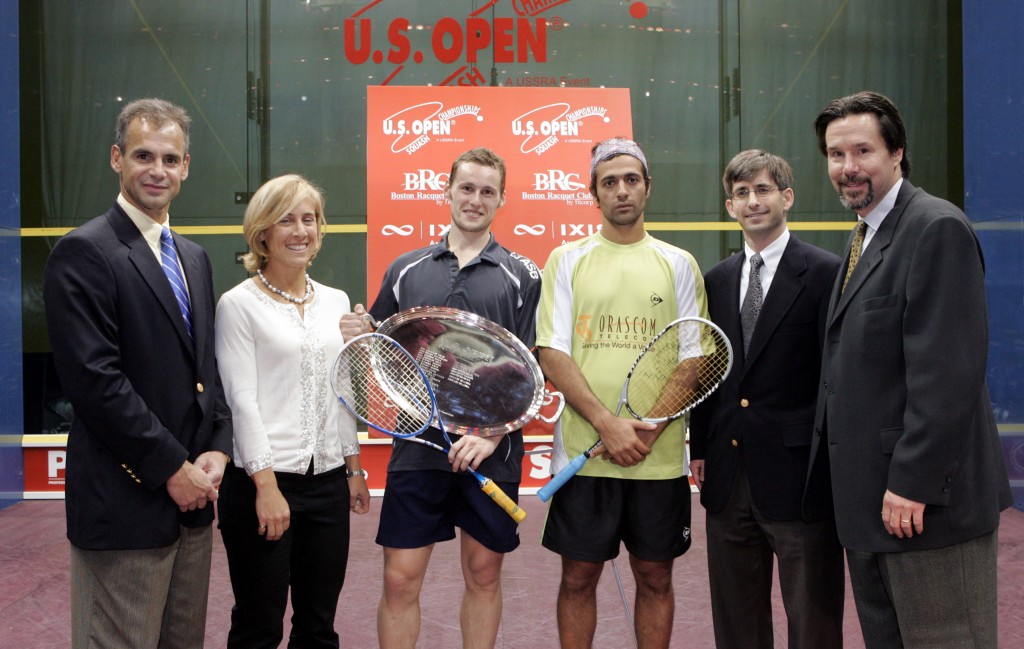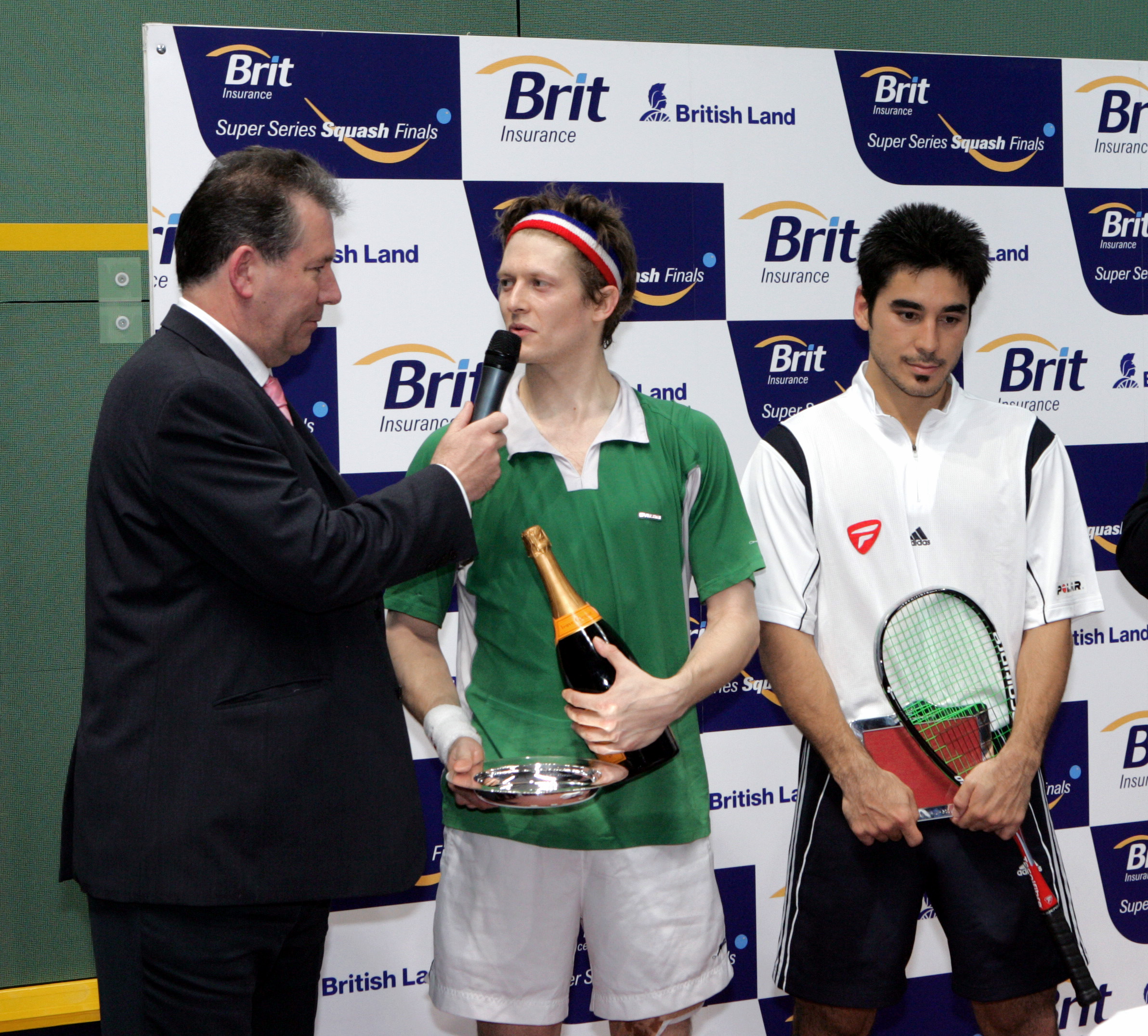By Richard Millman, Director of Squash, Kiawah Island Club
It’s a shame I didn’t have this attitude during my Math classes in high school.
You know the attitude I’m talking about—the opposite to the one where you do enough to keep up, but you never get ahead—the one where the person driving the learning process is the teacher not the student.
Sadly it took me a long time to realize that a person who is trying to keep up will never get ahead. The best they can hope to do is almost catch up to the leader. They will never actually be the leader.

Well, when you are learning to play squash it’s precisely the same situation, no matter whether you’re a beginner, an intermediate or a rising world-class tour player. If you want to be a winner you have to be a leader. Leaders win more often than followers.
Let’s start off with a simple example. Let’s say you are learning the mechanics of a basic forehand drive. Your coach is going to supply you with all the information you need to execute the stroke. Once you have modeled the form and you understand how to coordinate your movement—while you maintain a mental picture of your target, get the right distance from the ball, time your swing from preparation to follow-through, just as the ball drops from the peak of the bounce—the attitude that you adopt the instant after you complete the execution of that shot will determine whether you become a follower (read loser) or a leader (read potential winner). Why? Because if you look at your coach after the shot for approval/feedback, you transfer responsibility for your shot to the coach.
Why? Because the instant you come out of the shot (i.e., stop maintaining the follow-through position and stand up straight) and look at the coach, you stop focusing on you (the stroke you just finished) and you become completely absorbed in the coach’s facial expressions. You seek approval, so you look for cues. Does the coach look happy/sad? Frustrated? Impatient? Angry? Disappointed? The list goes on and on. Never mind what expression there is on the coach’s face (and by the way most coaches who have been around and who are successful have the patience of Job and won’t be at all negative in their attitude or facial expression). The point is that as soon as you look to the coach, you abdicate responsibility for your own shot and transfer it to the coach.
So what’s the solution? Well, first, never look at the coach while you are still mentally working on the shot or technique. You can (and should) listen to the coach but you should be ‘looking’ at what you have just done with your mind’s eye and correcting and polishing it (your eyes should probably be pointed toward where you wanted the ball to go). Then, without turning your eyes toward the coach and having asked any questions that are forthcoming, memorize the correction(s) that you want to make, keep them in the forefront of your mind and immediately ask the coach to feed again, so that you can quickly attempt the correction while it is fresh in your mind. As you become familiar with this process it should always be you that is driving the practice, asking for help from the coach, but maintaining ultimate responsibility for your performance. After all, you will be the one playing your matches. You can’t ask the coach to play for you! Of course if the coach directs you try something else, you will want to be compliant with that. But while you are working on perfecting a specific technique, you take responsibility for the way you execute each attempt.
As you move into multiple feed situations, you must learn to continue to be the driver of the practice. Teach yourself to do the thinking pertaining to each shot you play—before you arrive. As you execute the shot you should already be mentally moving on to the next shot, making a quick mental note of any adjustment you want to make for the next stroke. You should be recovering for the next shot as you complete the first one, always looking for the next feed before the ball arrives on the coach’s racquet. If the coach is feeding before you are ready to move, the coach is driving the drill (the leader) and you are behind (the follower/loser)!
The next progression is to multiple stroke drills—the ‘boast and drive’ for example. The ‘boast and drive’ is a drill that I see poorly executed by many players, even some experienced ones. The usual reason is that one or both players don’t have the leader’s attitude. They are doing enough to get by, nothing more—like me in my Math class.

To do ‘boast and drive’ effectively there should be a battle of wills between both players as they struggle for leadership of the drill. If you are learning ‘boast and drive’ and want to improve, here are some important cues for both the ‘driver’ and the ‘boaster’:
First and foremost, don’t assume that the driver will always hit a straight drive and the boaster will hit a boast. Pretend that you don’t know what shot is coming next and position yourself to cover all possibilities. A powerful imagination is an essential tool if you are going to do repetitive drills effectively.
However, once the ball has been struck and you see where it is going, the driver should be set up and ready to play as soon as possible but certainly before the boast strikes the front wall. Not the side wall or the bounce. The front wall. That way, if the boast strikes the nick, you are ready to sweep it up and maintain leadership of the drill.
The driver must gauge the pace of the drive to allow enough time to be ready to move for the next shot before the boaster can hit it. That means that as soon as the ball has been struck, the driver is mentally focused on the next shot—if there is any thought about whether or not the drive is good, bad or indifferent, that thought has to be utterly secondary to the focus on the next shot—or he/she will stop being the leader (winner) of the drill and instantly become a follower (loser).
The same types of cues are available to the boaster. The boaster should be set up ready to play before the drive bounces (not before it gets to the back wall as often happens). When executing the boast, as the shot is released the boaster should already be thinking about the next shot to be retrieved and organizing movement/position accordingly.
As you move on to more complex drills and game scenarios, keep these pointers in mind and make sure that you are taking responsibility and driving the learning/training process.
Here are some helpful reminders:
1) Don’t look for the coach’s approval. Look for the coach’s assistance so that you can eventually gain your own approval/satisfaction.
2) When working on any issue, whether technical, strategic, physical or emotional, make a mental note of what corrections you wish to make, immediately on completion of the stroke, rally, situation, game, match, or tournament and proactively seek to apply the correction as soon as you can. If possible, ask the coach or your training partner to set up the shot, rally, or situation so that you can make an immediate attempt.
3) Don’t do just enough to keep up. Take the leadership role and drive the drill or practice. This also applies to your attitude to other things in the game. For instance, if you are trying to work out how to get to a nick boast in time, you are creating a follower’s (loser’s) attitude. Instead, start thinking about how you can organize to get there before the bounce and get a leader’s (winner’s) attitude.
So next time you are working with your coach, surprise them by saying something like ‘give me that one again coach. I just want to try that follow-through again.’ They may be surprised, but they’ll be happy because they’ll recognize that you’ve got a leader’s (winner’s) attitude!
Next Month: Targets and burning them into your brain!
Skill Level Tips
Simple practice tips for 3.0, 4.0 and 5.0 players
3.0
When you first start taking lessons, remember that any new piece of technique you learn takes something in the region of 10-12 weeks of practice to become automatic. You can’t learn something in a lesson and execute it in a game. New techniques need plenty of time to execute and polish, and the whole point of competitive play is to deny the opponent time. So don’t try your new stuff in matches. Practice like fury and, when it’s ready, it will happen on its own. Meanwhile play with the technique that’s automatic right now—and enjoy your squash. The 10-12 weeks will soon go by. And don’t forget—every new tidbit will come out 10-12 weeks later. Theoretically, if you start now—once a week—in 62 weeks you will have made 52 improvements. The folks in the locker room will be asking each other how on earth you improved so quickly!
4.0
Are you taking regular lessons? If so, are you writing down the five or six key points that you are taking away from each lesson? The process of writing them down immediately after the lesson will help to positively reinforce them in your mind. Keep your notes in your squash bag and re-read them before you practice and just before your next lesson.
5.0
So you’ve been keeping notes for a while about your lessons. Now jot down the key things that you want to work on after your matches and practices. If a coach or player says something that strikes a chord with you, write that down too. I call these lists my shopping list. The stuff I want; even motivational pieces. Put them all into a notebook and keep it with your squash bag. Then, in a quiet moment before an important game or tournament, re-read your shopping lists. Then you’ll be ready to go and get the things you want on the court!


